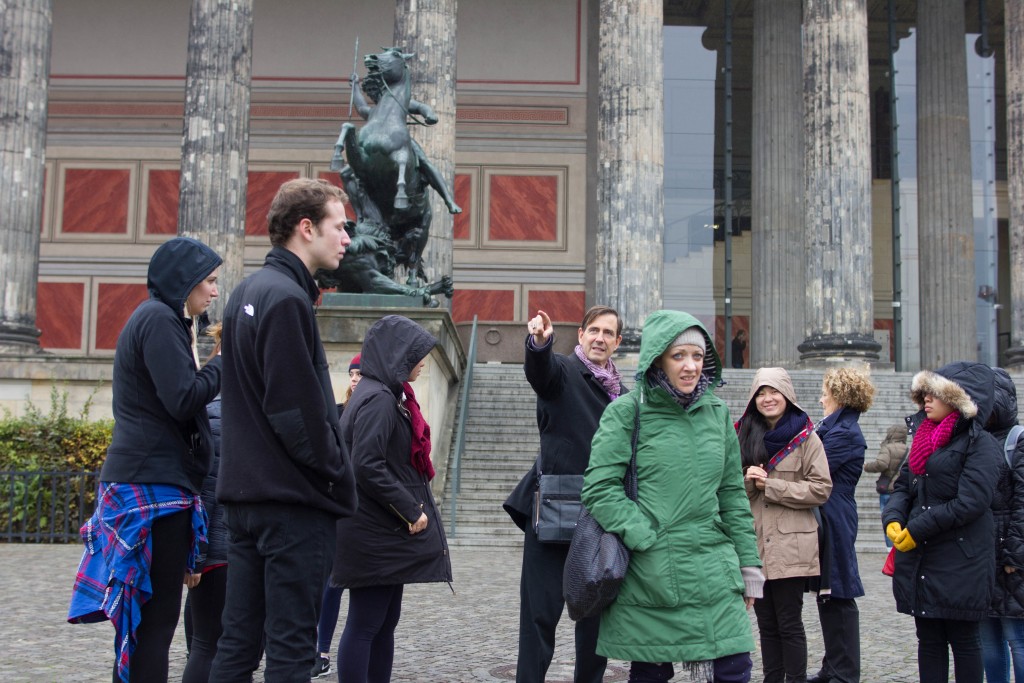In preparation for our trip to Berlin, professor Luana Perilli showed us a film called B-movie which highlighted the background of Berlin following the Second World War. The documentary focused on the youth culture and the artistic production that took place as the city was dealing with numerous political tensions, including the barrier caused by the Berlin Wall.
Being separated by east and west, the people of Berlin faced many hardships and the government only worsened those tensions. The youth rebelled in many ways and explored multiple new methods of music, style, and art which differed radically from their predecessors. Artists such as Nick Cave came to Berlin to indulge in such a radical and new environment. Music become the most important aspect of life and the generation of rebellious youngsters never left- even as we walked around the city we noticed older people with more eccentric styles. The city is still what it was, yet also growing at the same time.
Berlin can be described as a very contemporary city in both the literal and figurative senses. Because of the bombing of the city during the war, the city was almost completely destroyed and thus had to be rebuilt. What one therefore sees is a combination of the ruins of older buildings combined with incredibly new architecture such as the buildings of Frank Gehry. This mix of the old and the new was something that we encountered frequently, especially on the first day where we visited a former Nazi bunker, with the original doors and bullet holes still visible on the walls. Originally used as a meeting place for Nazi officials, the building was later used as a storage point for exotic fruits, earning the name ‘Banana Bunker’. Following the war, the bunker was then transformed into a popular party location and is currently used as a contemporary art gallery that uses both the space and art as a means of addressing various issues. What is most unique about the exhibition is the fact that the artists are not explicitly seen, nor are their descriptions. Instead, work is assembled together in a room, regardless of the artist, to provoke certain questions dealing with social and artistic issues instead of focusing on the popularity of a single artist.

After seeing the bunker gallery, we went to the famous Museum Island, which serves as a center for some of Berlin’s greatest art museums. Under the guidance of Professor Jeffrey Blanchard, the art students were able to choose which museums they wanted to see, resulting in an overwhelming desire to see the Neues Museum, which houses some of the most important ancient Egyptian art in the world. Although we were also able to see the Pergamon Museum, the collection of the Neues Museum was the most exciting, mainly because they had the coveted bust of Nefertiti- one of the greatest artifacts in the entire world. By the end of the day we were exhausted, yet excited to see what more awaited us in Berlin. We headed back to our hostel from the Museum Island, ready to rest for the next day.

-Veronica
